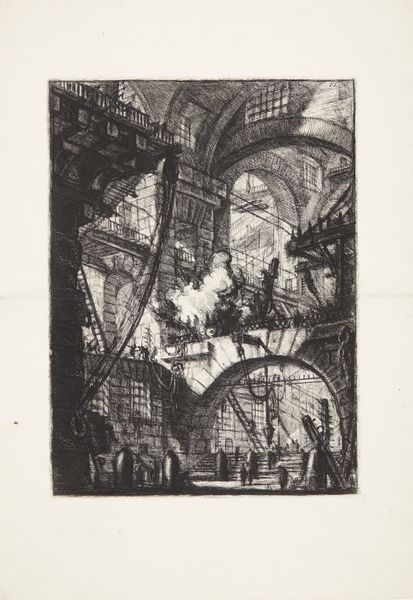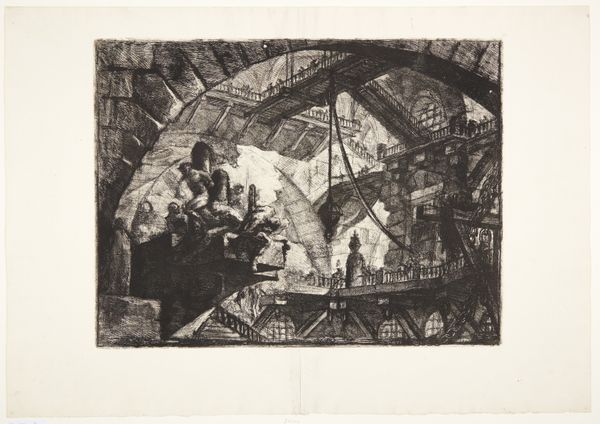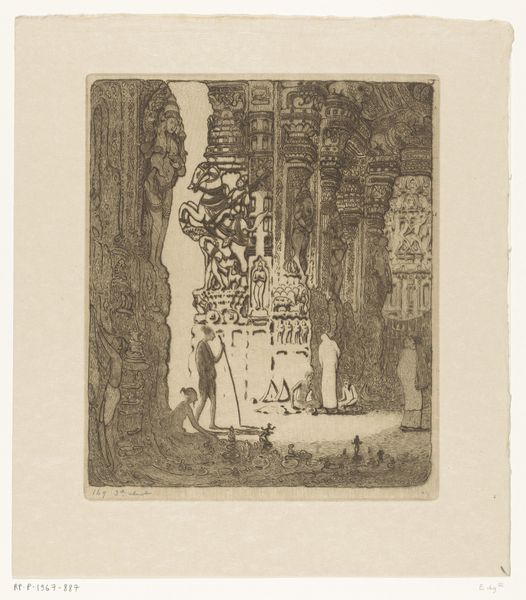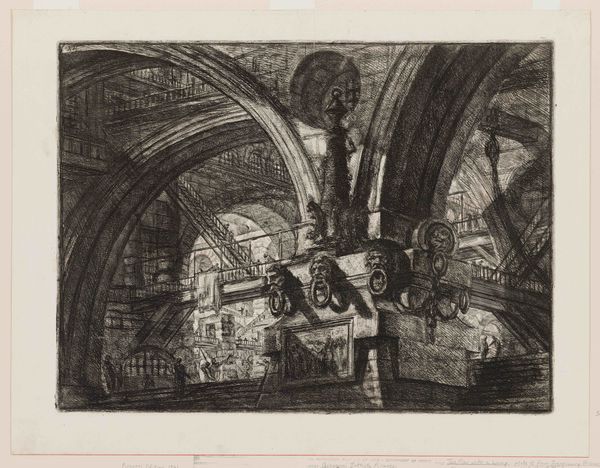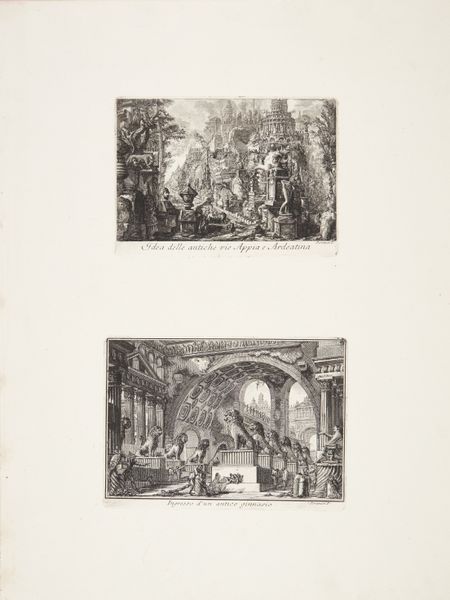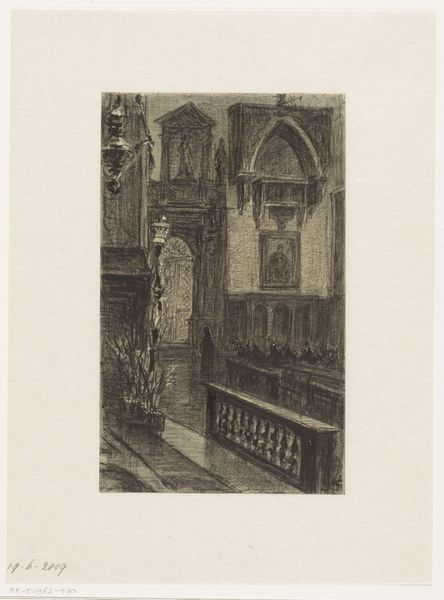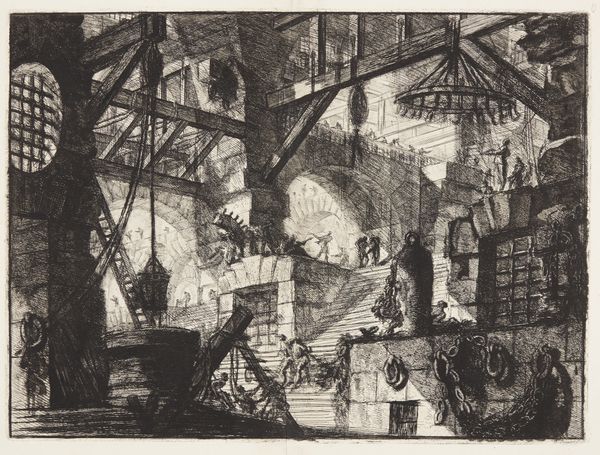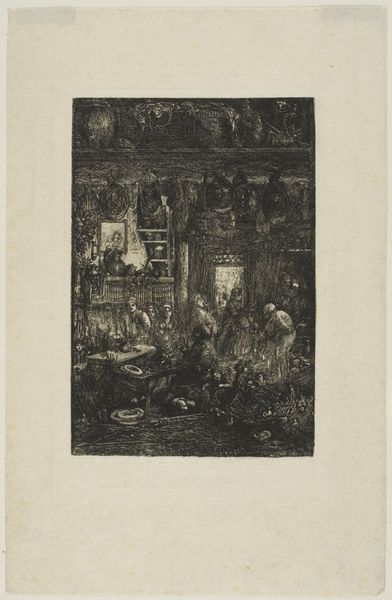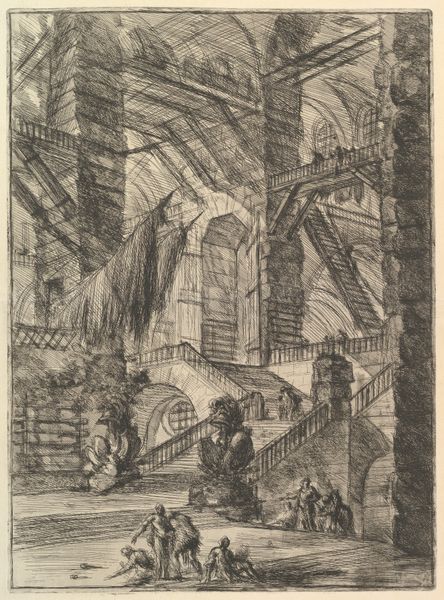
print, engraving, architecture
#
ink drawing
#
pen drawing
# print
#
landscape
#
line
#
history-painting
#
italian-renaissance
#
engraving
#
architecture
Dimensions: 561 mm (height) x 412 mm (width) (plademaal)
Curator: I find this print intensely theatrical! Its chiaroscuro almost overwhelms you. Editor: This is "The Lion-Bas-Reliefs" by Giovanni Battista Piranesi, made around 1759-1760. He rendered it in engraving—essentially, lines etched into a metal plate and then printed. What resonates so strongly is how the imagery layers the glory of the past and present day. Curator: Absolutely, look how Piranesi has intertwined different eras of architectural styles here! You’ve got what appear to be ancient Roman ruins overrun with construction… as though he's compressing centuries of building into one disorienting vision. What statements are you trying to convey? Editor: Right. There is also commentary embedded here in that overlay. For instance, these aren’t just relics romantically decaying. There is this tension of progress—constant rebuilding, a restless spirit that doesn’t quite let the past rest, does it? The image presents the continuity of labour imposed upon marginalized people. Curator: I do agree with this sentiment and I was so drawn into how the statues of the lions at the forefront, for instance, and the scattered workers higher up—their repetition becomes like an insistent symbol across time! I agree about seeing layers not just architecturally, but symbolically, the repetition creates an uneasy familiarity. Editor: I think Piranesi uses architectural grandeur and then intentionally undermines it by showing it swarming with bodies performing tasks, hinting at the socio-political and socio-economical stratification underpinning them, as well. So are the grand constructions oppressive infrastructures for labourers, who are quite frankly presented as rather diminutive? What do we venerate? What is the purpose? What happens to our structures that may appear unassailable from the exterior, internally, what social ills are created through those achievements. Curator: It strikes me too how darkness pools in those arches, like literal and metaphorical shadows… Piranesi knew well how to conjure an emotional impact beyond simply recording a place. Editor: I agree! The etching, here, isn’t just a record. It uses history to pose enduring, uncomfortable questions about progress, class, and our relationship to legacy. A brilliant combination!
Comments
No comments
Be the first to comment and join the conversation on the ultimate creative platform.
